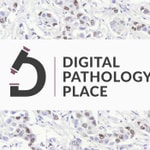Digital Pathology Podcast – Details, episodes & analysis
Podcast details
Technical and general information from the podcast's RSS feed.

Digital Pathology Podcast
Aleksandra Zuraw, DVM, PhD
Frequency: 1 episode/15d. Total Eps: 143

Recent rankings
Latest chart positions across Apple Podcasts and Spotify rankings.
Apple Podcasts
🇬🇧 Great Britain - naturalSciences
25/07/2025#98🇬🇧 Great Britain - naturalSciences
24/07/2025#87🇩🇪 Germany - naturalSciences
24/07/2025#96🇬🇧 Great Britain - naturalSciences
23/07/2025#81🇩🇪 Germany - naturalSciences
23/07/2025#82🇬🇧 Great Britain - naturalSciences
22/07/2025#60🇩🇪 Germany - naturalSciences
22/07/2025#63🇩🇪 Germany - naturalSciences
21/07/2025#39🇨🇦 Canada - naturalSciences
15/07/2025#98🇨🇦 Canada - naturalSciences
14/07/2025#86
Spotify
No recent rankings available
Shared links between episodes and podcasts
Links found in episode descriptions and other podcasts that share them.
See all- https://www.instagram.com/p
11467 shares
RSS feed quality and score
Technical evaluation of the podcast's RSS feed quality and structure.
See allScore global : 62%
Publication history
Monthly episode publishing history over the past years.
108: DigiPath Digest #14 (AI in Pathology: Case Prioritization, Kidney Biopsy Analysis and the Need for Consistent TIL Quantification).
Episode 108
vendredi 11 octobre 2024 • Duration 32:40
In this 14th episode of DigiPath Digest, I introduce a new course on AI in pathology, designed to help pathologists understand and confidently navigate AI technologies.
The episode focuses on various research studies that highlight the integration and effectiveness of AI in pathology, particularly in colorectal biopsies and kidney transplant biopsies, emphasizing the importance of seamless workflow integration.
You will also learn about challenges in manual assessment of tumor-infiltrating lymphocytes and HER2 expression in breast cancer. I advocate for more consistent and precise AI-driven approaches.
And there an opportunity for a discounted beta test of the new AI course.
00:00 Welcome to DigiPath Digest #14
00:24 New AI Course Announcement
01:51 Deep Learning in Colorectal Biopsies
09:17 AI in Kidney Biopsy Evaluation
16:12 Automated Scoring of Tumor Infiltrating Lymphocytes
24:22 AI for HER2 Expression in Breast Cancer
31:13 Conclusion and Course Details
THIS EPISODE'S RESOURCES
📰 A deep learning approach to case prioritisation of colorectal biopsies
🔗 https://pubmed.ncbi.nlm.nih.gov/39360579/
📰 Galileo-an Artificial Intelligence tool for evaluating pre-implantation kidney biopsies
🔗 https://pubmed.ncbi.nlm.nih.gov/39356416/
📰 Automated scoring methods for quantitative interpretation of Tumour infiltrating lymphocytes (TILs) in breast cancer: a systematic review
🔗 https://pubmed.ncbi.nlm.nih.gov/39350098/
📰 Precision HER2: a comprehensive AI system for accurate and consistent evaluation of HER2 expression in invasive breast Cancer
🔗 https://pubmed.ncbi.nlm.nih.gov/39350085/
▶️ YouTube Version of this Episode:
🔗 https://www.youtube.com/live/jkT8dTxelt4?si=xT6MNH7O4HuUnAN6
📕 Digital Pathology 101 E-book
🔗https://digitalpathology.club/digital-pathology-beginners-guide-notification
🤖 "Pathology's AI Makeover" Online Course 50% OFF
🔗 Let me know that you are interested in LinkedIn (just 10 spots available)
Become a Digital Pathology Trailblazer get the "Digital Pathology 101" FREE E-book and join us!
107: DigiPath Digest #13 (Revolutionizing Pathology with AI: Insights from PD-1 to Prostate Cancer Predictions)
Episode 107
mercredi 9 octobre 2024 • Duration 23:34
Good morning, digital pathology trailblazers! Welcome to another exciting exploration of digital pathology and AI. I’m thrilled to have our global community here with us today from so many different time zones. Before we dive into today's content, a quick note: my equipment is being a bit finicky, but that’s life in the digital world!
Integrating Image Analysis with AI
Let's kick off with a recap of some recent updates. Yesterday, I had the privilege of presenting to a mixed group at Cincinnati Children’s Hospital. We discussed AI in image analysis, an essential tool bridging radiology and pathology as these fields rapidly evolve with new technologies like foundation models and large language models. A diverse audience—ranging from radiologists to pathologists—prompted me to adapt my presentation style on the spot. It was a dynamic discussion about the advancements in healthcare that shared perspectives from both sides.
Lymphovascular Invasion: A Case Study
Our first paper today focuses on a deep learning model for identifying lymphovascular invasion (LVI) in lung adenocarcinoma. This significant prognostic factor is crucial for advancing diagnostic consistency and reliability. Unlike broad foundation models, this work engages with dedicated image analysis applications targeting specific diagnostic challenges. The study demonstrated reduced pathologist evaluation time by nearly 17% and even more in complex cases, aligning with previous findings that AI enhances efficiency by around 21%.
AI Collaborations: Human and Veterinary Pathology
Next, we delve into a collaborative effort between human and veterinary pathologists, emphasizing the promise of AI integration in telepathology and digital pathology. These fields are converging to enhance information exchange, teaching, and research. I’m particularly excited about this paper due to my own veterinary pathology background and the potential it offers for both educational and clinical practices.
Spatial Profiling and Immuno-Oncology
We then journey into the intricate landscape of immuno-oncology with a study on PD-1 and PD-L1 in osteosarcoma microenvironments. Utilizing deep learning and multiplex fluorescence immunohistochemistry, researchers highlighted the spatial orchestration of these markers, providing insights into potential immunotherapeutic strategies. This work is an exemplar of how AI can illuminate complex biological landscapes, offering a path for future therapies.
Conclusion
Thank you all for joining this vibrant discussion. Whether you’re tuning in from early morning in Atlanta or late at night in Algeria, your engagement enriches our learning experience. Keep an eye out for more content and upcoming courses designed to unpack these groundbreaking developments in AI and digital pathology.
Until next time, keep blazing trails in digital pathology!
Become a Digital Pathology Trailblazer get the "Digital Pathology 101" FREE E-book and join us!
98: DigiPath Digest #6 (Foundation models high level overview)
Episode 98
vendredi 2 août 2024 • Duration 49:33
Exploring Foundation Models in Digital Pathology: Insights and Tools
In today's DigiPath Digest we talk about the foundation models in pathology.
reviewing abstracts from two notable papers in Nature.
We discuss the high-level overview of these models, including Hamid Tizhoosh's insights on the vast data requirements for developing effective foundational models.
We also explore tools for literature research, comparing PubMed and Undermind.ai, and examine a useful children's book on artificial intelligence :)
The episode features audience interaction and offers updates on digital pathology trends, along with a personal anecdote on the nature of comparison based on a yoga class experience.
00:00 Introduction and Overview
00:16 Foundation Models in Pathology
00:33 Comparing Research Tools
01:03 Live Stream Interaction
01:12 Starting the Podcast
04:51 Foundation Models Explained
05:11 Research and Findings
06:34 Children's Book on AI
08:00 Deep Dive into Foundation Models
14:28 Case Studies and Examples
18:18 Discussion on Data and Models
21:00 Final Thoughts and Questions
26:24 Exploring ToxPath and Foundation Models
27:05 Introduction to Image Repositories
28:36 Using PubMed for Research
30:35 Exploring Undermined Tool
35:42 Comparing PubMed and Undermined
41:00 Final Thoughts and Recommendations
TODAY'S ABSTRACTS & RESOURCES
📄 Here are the abstracts reviewed today:
- A visual-language foundation model for computational pathology
- A foundation model for clinical-grade computational pathology and rare cancers detection
▶️ Hamid Tizhoosh's lecture:
🔧 The tool we tried today
📕 A book we discussed :)
Become a Digital Pathology Trailblazer get the "Digital Pathology 101" FREE E-book and join us!
8: What is validation and how to validate an AI image analysis solution with Tom Westerling-Bui from Aiforia
Episode 8
jeudi 4 juin 2020 • Duration 54:46
The tools to develop AI models for biomedical image analysis have recently become accessible also for non-computer scientists. With the accessibility to AI tools, the question arises whether the things we build are good enough?
How do we check the model?
How do we validate it and be sure that when deployed according to the intended use it will perform adequately and help us make the right decisions based on the correct premises?
In this episode, Thomas Westerling-Bui from Aiforia explains the validation principles that should be applied to AI image analysis solutions.
The AI image analysis model validation is like any other assay validation. It starts with finding out the boundaries of the assay's usability. As for any assay, also in the case of an AI model its precision and recall are the most important parameters we want to check. We need to perform a conceptual validation and find out if the platform used does what we want it to do and an analytical validation to precisely quantify the accuracy of the method.
Validation is different from improving the AI model on a given data set and always needs to be performed on an independent data set. Unfortunately, there seems to be confusion about that in the scientific community which weakens many of the biomedical publications describing the development and use of AI models.
Another important concept - the intended use, is crucial not only for the use of the assay but also for its validation. The validation of a screening tool will be performed differently than the validation of a diagnostic tool.
As powerful as they are, the AI-based tools are just tools and will not do the things they are not designed (trained) to do so the validation should be tailored to the things they ARE trained to do.
As supervised AI methods rely on human-generated ground truth both for training and for validation the decision of how many validation regions to include depends heavily on the human capacity to provide adequate ground truth - in the case of image analysis it often includes annotations. If the users are pressed to generate a large number of annotations, precision may suffer so a middle ground needs to be found to provide an adequate number and maintain precision.
Another important aspect of generating ground truth is interobserver variability. It needs to be quantified and accounted for during the validation, which is why comparing model outputs against ground truth generated by just one individual is of limited value.
In a nutshell, the subject is complex, and to understand these and other nuances of AI model validation the following resources may be of use:
Online courses:
- Coursera:
- Other:
Books:
Become a Digital Pathology Trailblazer get the "Digital Pathology 101" FREE E-book and join us!
7: Pro bono telepathology w/ Jared Block and Gabe Siegel.
Episode 7
mardi 12 mai 2020 • Duration 15:28
Jared organized a fundraiser and Gabe donated to the fundraiser, but he didn't donate money, he donated an augmented reality system - basically, the most expensive piece of equipment Jared was raising money for.
This collaboration was born on-line when Jared Block from Carolinas Pathology Group in Charlotte, NC published a post about his fundraiser and Gabe Siegel from Augmentiqs read it and realized it was a match - a great contribution could be made to a place in need where solid collaboration has already been established.
The collaboration was established by Jared with the Muhimbili National Hospital in Dar es Salaam, Tanzania. Since Jared's visit in June 2019 as part of a program supported by the American Society of Hematology and Health Volunteers Overseas, the doctors in Dar es Salaam were supported not only with equipment bought with the fundraiser money but also with lectures, videos and case consultations (often over Whatsapp) provided by Jared.
The plan was to visit the Muhimnbili National Hospital again this July...Obviously, due to COVID-19, all our travel plans have changed drastically, but we are keeping our fingers crossed for the next visit whenever it will take place.
To read more about Jared's fundraiser and to donate go to:
Help Doctors Treat Leukemia & Lymphoma in Tanzania
And to learn more about Gabe and Augmentiqs, listen to our previous podcast episode:
Digital pathology for microscope lovers. How Augmentiqs approaches digital pathology differently w/ Gabe Siegel.
Become a Digital Pathology Trailblazer get the "Digital Pathology 101" FREE E-book and join us!
6: Digital pathology for microscope lovers. How Augmentiqs approaches digital pathology differently w/ Gabe Siegel.
Episode 6
dimanche 12 avril 2020 • Duration 47:03
Due to the coronavirus pandemic, so many pathologists need to work from home today. The microscopes and the slides were packed and brought home. Everyone is now on their own. No more knocking at a colleague's door to consult a diagnosis...
But what if pathologists could still collaborate with ease, and consult colleagues from their home offices while reading the slides under the microscope? In real-time. What if at the same time they could also have access to image analysis tools while reading the slides under the microscope? In real-time.
In this episode, my guest is Gabe Siegel, the founder and CEO of Augmentiqs, a company offering digital pathology inside the microscope. Listen to how Augmentiqs approaches digital pathology by respecting and improving the normal pathologists' workflow, how they enable real-time telepathology and image analysis with their electro-optical module which can be incorporated into any microscope.
To learn more about Augmentiqs visit their website: https://www.augmentiqs.com/
Read the peer-reviewed articles describing their projects:
- New Technologies: Real-time Telepathology Systems - Novel Cost-effective Tools for Real-time Consultation and Data Sharing (Toxicologic Pathology)
- Utilizing novel telepathology system in preclinical studies and peer review (Journal of Toxicologic Pathology)
And have a detailed look at the Augmentiqs system.
Become a Digital Pathology Trailblazer get the "Digital Pathology 101" FREE E-book and join us!
5: HistoWiz: fast histology and an image database for mining from Brooklyn NY w/ Ke Cheng
Episode 5
dimanche 17 novembre 2019 • Duration 30:20
She is a researcher herself and during her research, she experienced the great histopathology pain point first hand: it was too slow! So to help researchers solve this problem she created a company - Histowiz, which not only provides fast histology services but also provides her customers access to a centralized pathology image database that can be used for data mining and to a large network of pathologists providing telepathology services.
In this interview Ke Cheng, the CEO of Histowiz tells the story of her company, explains how Histowiz is different than other digital pathology companies and tells us what the Histowiz team harnesses AI to do for them.
To learn more about the company and its offer visit
Histowiz website.
And to learn about how to automatically tag whole slide images with multiple tags read
"Patch Transformer for Multi-tagging Whole Slide Histopathology Images"
Become a Digital Pathology Trailblazer get the "Digital Pathology 101" FREE E-book and join us!
4. PathPresenter a tool to make killer pathology presentations and much more w/ Rajendra Singh, MD
Episode 4
samedi 16 novembre 2019 • Duration 39:35
Do you remember a presentation where the presenter had to switch between their powerpoint and a whole slide viewer to show a case and do you remember how annoying that was?
Or a presentation where the presenter tried to show the highlights of a case with screenshots embedded in their presentation, but they were not representative at all and you wished you could see the whole slide?
Now you don't need to repeat these suboptimal experiences. There is a tool that can do it all - create presentations with whole slides embedded in it with full viewing capacities seamlessly integrated into the presentation - it's the PathParesenter platform.
In addition to killer presentations, users can create a virtual slide box, get access to a slide library, use high yield fully described cases for reference or education, create quizzes and chat in groups.
Today I am joined by Rajendra Singh, MD, the creator of the PathPresenter platform. He tells us the story behind the platform and how we can start using PathPresenter for free now!
Become a Digital Pathology Trailblazer get the "Digital Pathology 101" FREE E-book and join us!
3: Proscia’s tools and vision for modern pathology w/ Nathan Buchbinder.
Episode 3
vendredi 15 novembre 2019 • Duration 30:34
Do you think your pathology laboratory is modern? If so, you have most probably gone digital. Nowadays modern pathology means digital pathology. However, to fully embrace digital pathology a scanner is not enough. You need the correct tools. Tools to manage your whole slide images in a systematic way and artificial intelligence-based tools enhancing your performance. Proscia is offering both.
Today my guest is Nathan Buchbinder, one of the co-founders and Chief Product Officer of Proscia. Listen to Proscia's creation story, what tools they have to offer and how these tools can help your laboratory.
Disclaimer: Proscia's products are for research use only
Become a Digital Pathology Trailblazer get the "Digital Pathology 101" FREE E-book and join us!
2: How to get microscopes to where there are no microscopes? The X-wow project w/ Yuchun Ding.
Episode 2
samedi 5 octobre 2019 • Duration 36:33
For pathologists and scientists microscope does not seem like a luxury, it is an everyday tool necessary to do their jobs. It is not a cheap tool, but there is no option not to have one, especially if you work in a pathology or microbiology lab. Otherwise, you cannot do your job, you cannot help patients, and every day there are so many cases to diagnose.
But what to do, in places, where there are as many cases to diagnose, as many patients who need this diagnosis, but a lot fewer microscopes? This was the question Yuchun Ding asked himself. After quite some time as a computer scientist in the field of digital pathology, he decided to go beyond his science to help patients in the underserved areas directly. This is what his project (now an official trademark) X-wow is about.
Listen to his story and see how you can help as well.
Become a Digital Pathology Trailblazer get the "Digital Pathology 101" FREE E-book and join us!









